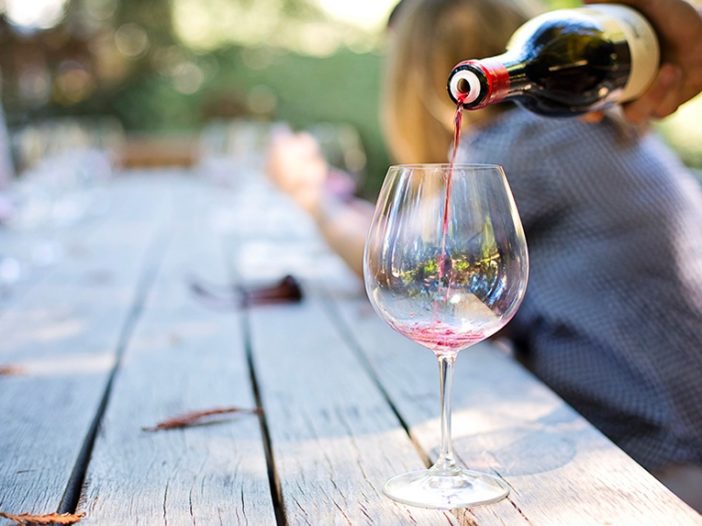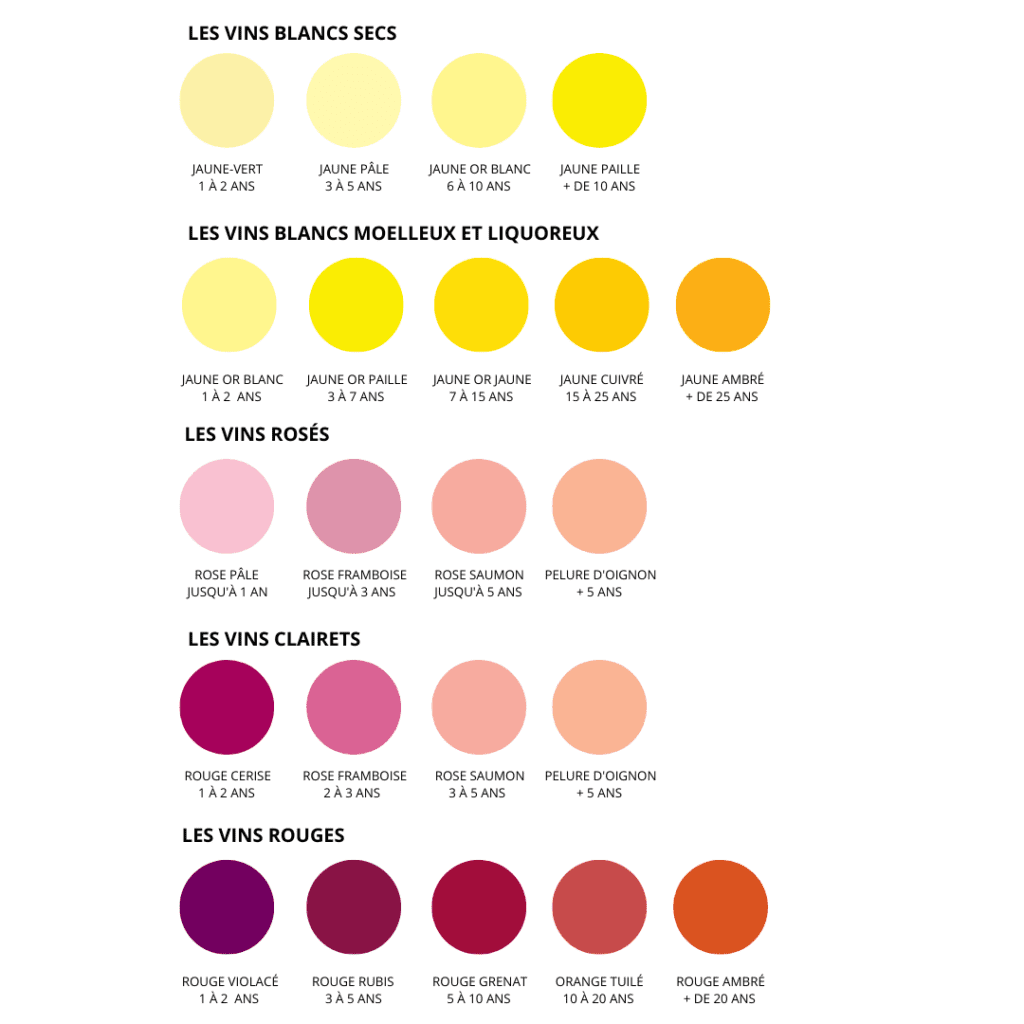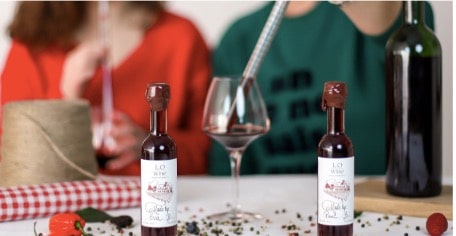
Dégustation de vin, comment bien faire ?
La dégustation de vin se fait en trois étapes, une étape visuelle, une étape olfactive & une étape gustative ! Chacune de ces étapes va vous donner des informations sur le vin à déguster :
- Le visuel vous donne l’âge du vin ainsi que sa richesse en alcool
- Le nez vous donne le défaut éventuel et son évolution possible
- La bouche vous fournit sa qualité et son équilibre
Vin à déguster, commencez par une analyse visuelle
La couleur

La nuance de couleur va vous donner une indication sur l’âge du vin. Pour le rouge, il passe de pourpre (vin jeune) à tuilé (vin vieux). Pour le vin blanc, il passe de jaune-vert (vin jeune) à orangé (vieux).
La teinte orangée du vin blanc peut le caractériser comme vin moelleux, en effet, la sucrosité joue sur la teinte.
Si vous faites face à la présence de dépôts dans un vin rouge, c’est que le vin n’est pas filtré. On retrouve communément ces dépôts au fond de la bouteille ou du verre. La filtration est une étape avant la mise en bouteille, le vin a besoin d’être filtré. Cela lui apporte de la limpidité car il peut être trouble avant filtration.
Pour le vin blanc, cela est dû à une conservation du vin dans un endroit trop frais, les cristaux blancs sont des cristaux de tartre dont il ne faut pas s’inquiéter puisque c’est un élément naturel.
La brillance
Au cours de son évolution, le vin perd de son acidité et donc de sa brillance. Celle-ci se mesure grâce au reflet de la lumière à la surface du vin. Si la robe du vin est terne, c’est qu’il est sur le déclin. La prochaine fois, ouvrez la bouteille avant !
L’intensité
Le vin est pâle lorsqu’on peut voir à travers sur fond blanc, sinon il peut-être soutenu ou plus encore, foncé. Ces caractéristiques sont dues au cépage et à l’âge du vin.
Dégustation vin, elle passe aussi par l’analyse olfactive

Dans un premier temps, on sent le vin sans faire tourner le verre, ce qui permet de définir les premiers arômes.
Dans un second temps on va sentir le vin en l’aérant, on va donc faire tourner le vin dans le verre.
L’intensité
On définit la puissance des arômes en raisonnant par famille, dont les principales sont : Fruitée, Végétale, Boisée, Épicée, Empyreumatique, Animale, Balsamique & Minérale.
Les arômes se forment avec le phénomène de la fermentation alcoolique. Ils sont liés à la maturité du raisin, l’âge du vin, la vinification, au cépage, en bref, beaucoup de facteurs.
Les arômes évoluent au cours du vieillissement du vin : Dans sa jeunesse, le vin présente des arômes de fruits frais, de fleurs. Dans l’évolution, on va retenir des arômes de fruits confits, de champignons.
Dégustation de vin, une analyse gustative en trois étapes
Si, dans la pratique, l’exercice de la dégustation se déroule en un seul temps, l’analyse procède, elle, par trois phases successives.
L’attaque
Elle correspond à la toute première impression que le vin fait naître sur la langue lorsque le dégustateur prend une petite gorgée de vin. D’emblée, il perçoit la température, la présence éventuelle de pétillants, mais il se forme aussi une idée de la personnalité gustative du vin.
Le « milieu de bouche »
Cette étape aussi appelée “grumer” correspond à l’épanouissement du vin dans la bouche. Pour ce faire, le dégustateur fait tourner une gorgée de vin dans la bouche pendant quelques secondes, donnant l’impression de mâcher », puis inspire un filet d’air par la bouche afin d’accélérer l’acheminement des molécules aromatiques vers le bulbe olfactif via la voie rétro nasale.
À ce stade, il appréhende toutes les saveurs et odeurs, la texture et la structure inhérentes au vin. Or, ces sensations olfactives, tactiles et thermiques, qui s’additionnent et se combinent entre elles, livrent une impression globale. La tâche du dégustateur est alors d’essayer de les différencier successivement afin de les analyser et de juger de l’équilibre du vin.
La finale
Cette dernière étape correspond à la persistance aromatique, ou longueur en bouche, du vin dans la bouche, une fois celui-ci avalé (ou recraché). Elle donne une idée de la grandeur du vin. Plus un vin est long, plus grande sera sa qualité. Cette persistance se mesure en secondes ou caudalies (du latin cauda, queue »), dans le langage du dégustateur. Elle peut aussi être décrite comme longue, épanouie, et, dans le meilleur des cas, on parlera de queue de paon. A contrario, elle est dite inexistante. fugace, brève ou courte.
La difficulté consiste à ne pas confondre la persistance aromatique avec les sensations engendrées par l’acidité, l’alcool ou les tanins – soit une sensation de brûlure. de chaleur ou d’astringence, qui tendent souvent à la masquer. Le plus simple est de se concentrer sur l’arôme dominant et, une fois le vin avalé (ou recraché), de le suivre jusqu’à sa disparition. L’essentiel dans cette analyse gustative est de caractériser l’équilibre dominant du vin.
Enfin, il ne saurait y avoir de dégustation sans conclusion ! Une rapide synthèse s’impose concernant non seulement la qualité du vin à cet instant T de la dégustation mais aussi son éventuel devenir. Et puis, bien sûr, c’est le moment pour le dégustateur d’exprimer son propre goût.
L.O Wine vous accompagne pour un cours de dégustation

Pour les amateurs, L.O Wine vous propose de vivre une expérience inoubliable au Château Vieux-Mougnac dans le grand Saint-Emilionnais !
Visitez un vignoble bio, apprenez à déguster, participez à un cours d’assemblage et repartez avec une bouteille de vin personnalisée. Pour plus d’information rendez-vous sur le site : https://lowine.fr/cours-oenologie-particuliers/



